
When talking about Wargroove, it’s hard not to make comparisons with Advance Wars- hard, because developers Chucklefish have made no attempts at hiding just how heavily inspired their game is by Nintendo’s turn based tactics franchise. It’s been over a decade since we last saw of it, and Nintendo have given no indication that they’re ever going to return to it. Clearly, Chucklefish got tired of waiting around, and decided to just do it themselves.
And the biggest praise I can give to Wargroove is this- rather than being a game that I can “make do with” to make the seemingly endless wait for the next Advance Wars a little less torturous, it’s actually a game that has put an end to that wait almost entirely. It’s not Advance Wars – nothing ever will be – but thanks to Wargroove, Advance Wars’ absence is felt much less keenly.
"It’s not Advance Wars – nothing ever will be – but thanks to Wargroove, Advance Wars’ absence is felt much less keenly."
It’s also a game that will appeal greatly to tactics purists. You don’t have to worry about permadeath, neither do you have to focus on levelling up or upgrading any character. All you have to focus on are the intricate mechanics and systems in place, working towards understanding them completely, and then putting that understanding into practice. Rather than having specific characters to use in battles like in, say, Fire Emblem or Valkyria Chronicles, in Wargroove, you have to bolster your ranks by creating these units yourself. You capture and hold structures scattered throughout the map, and then use the gold they yield every turn to procure soldiers and units from your barracks.
All of this will be very familiar to those who’ve played Advance Wars, and it functions almost exactly as it did in those games. With the focus in most battles being on capturing and holding buildings, every match becomes a gradual push, as you slowly claim territory and push forward your frontlines to encroach upon enemy territory. Strategy comes into play here as well- do you leave some units behind to defend your structures, in case the enemy tries to capture them and put a dent in your income for the next turn, or do you take a risk and push forward with all you’ve got? Do you waste turns for units trying to capture enemy strongholds, do you leave them as is, or do you go for the middle ground, driving the enemy out and hurting their income, but then using the next turn to push forward instead of capturing that now vacant stronghold? Battle lines are always shifting, and deciding how to make them shift in your favour is a constant priority.
The units you do have at your disposal exhibit great variety. From swordsmen and pikemen to archers and mages, from knights and battlepups to ballistas and trebuchets, from naval units to fire-breathing dragons, there’re are a lot of options to choose from. Each unit poses unique strengths and advantages- knights are fast moving and have long range of movement, but fall easily to pike wielders. Trebuchets are very effective against golems and for destroying enemy structures, but are defenceless if they’re ever attacked one on one. Swordsmen don’t cost much, have decent range of movement, and do decent damage, but are generally not very strong defensively.
Critical hits and the requisites required for landing them also contribute greatly to making each unit feel unique. For every unit, if a certain condition is met, they land a critical hit- a pikeman needs to be adjacent to another pikeman, an archer needs to attack without first moving, a swordsman needs to be adjacent to his commander, a knight needs to move exactly six tiles in a turn before landing a hit. As such, positioning also becomes supremely important, and planning your movement and your actions around whether or not you will land critical hits – which can come in extremely handy in tough situations, and at times even help in avoiding such situations entirely – becomes an integral part of how you approach battles.
"Wargroove is a game that will appeal greatly to tactics purists. You don’t have to worry about permadeath, neither do you have to focus on levelling up or upgrading any character. All you have to focus on are the intricate mechanics and systems in place, working towards understanding them completely, and then putting that understanding into practice."
All this information – a unit’s strengths, weaknesses, how much damage they will deal in their next attack, and a lot more – is readily available at the press of a button, and delivered succinctly, yet thoroughly. One gripe I have with the UI in question, though, is that in the section that describes what kinds of units a particular unit is weak to, it only shows the sprites of said units, which can be hard to differentiate. Instead, showing sprites of the weapon types they’re weak to, or better yet, just conveying that information through text, would have been much more effective.
What is somewhat disappointing is that though there is a lot of variety across units, the same cannot be said about factions. There are multiple factions in Wargroove, but ultimately, they all have the same kinds of soldiers at their disposal, and differences are only found at a surface level. One faction might be of a forest-dwelling magical species, and another of undead soldiers and vampires, but ultimately, a swordsman is still a swordsman. They have different names, and look different from each other, but have the same attributes and function the exact same way. The realization that new factions don’t bring anything mechanically different to the table can be a deflating one.
Barring that, though, Wargroove finds plenty of ways to be mechanically inventive, even beyond things such as critical hits and unit variety. For instance, the best way to approach battles is to be aggressive, because how much damage a unit deals is inversely proportionate to how much health it has. As such, even here Wargroove finds ways to make you think about what you want to do and how you want to do it. Often it’s a great idea to whittle down the health of enemy units as much as you can in your turn, so that you take less damage when it’s their turn to attack. In turn, this also presents interesting decisions at times- should you use up a turn to kill a unit with low health, or instead attack a unit with higher health so that it doesn’t deal a lot of damage when it’s its turn to attack?
You also have Commanders at your disposal- unlike all your other troops, these are named characters who are most definitely not disposable. Each Commander has a special move that is unique to them, from healing units, to allowing them to take two actions in a single turn, to creating a defensive aura around a specific section of the map, and a lot more. Commanders also have significantly higher defence and offence than any other unit, and gradually and incrementally heal over time- but on the flipside, if your Commander dies, you lose the battle. The risk-reward factor comes into play here as well. Using your Commander in an aggressive manner can make several things easier, from capturing enemy strongholds to killing stronger enemy units, but by doing so, you also put your Commander in greater peril, and at higher risk of dying. Figuring out how to use your Commander, as you can imagine, can often be a life and death decision.
"Barring the introductory missions, Wargroove’s maps are either too ambitious in terms of size, or throw too many enemies at you. The result in both scenarios is the same- battles go on for way longer than they should."
While moment-to-moment gameplay in Wargroove is compelling and tactical, though, the game’s campaign doesn’t always know how to make use of it properly. One of the biggest issues with the campaign is its pacing, which, in turn, boils down to how long its battles can drag on. Barring the introductory missions, Wargroove’s maps are either too ambitious in terms of size, or throw too many enemies at you. The result in both scenarios is the same- battles go on for way longer than they should, and can oftentimes end up feeling like a slog by the time they come to an end. The best thing about games like Fire Emblem and Advance Wars is that their battles rarely go on for longer than they should, and keep things moving at a brisk pace, taking you from one scenario to the next, one map to the next, with great momentum. The same cannot be said about Wargroove.
It’s also a shame that Wargroove doesn’t allow you to save in the middle of battles- it allows you to save and exit, but it doesn’t allow you to create save states that you can load up at any time. Given how challenging the game can so often be, you will be failing a lot, but since there are no mid-match saves, that means starting over again. Coupled with the long duration of most battles, that can be both disheartening and frustrating, especially when you’re so close to the end but are forced to start over because of one silly mistake. Sure, it raises stakes, but it can also feel a bit too punishing. For comparison’s sake, Valkyria Chronicles 4 is another game that has a propensity for extremely long battles, which are no cakewalk either- but it doesn’t lose any of its challenge by allowing players to save whenever they want during fights.
The main missions are also a bit lacking in objective variety. More often than not, objectives boil down to killing the enemy Commander (or destroying their main stronghold), and the game re-uses this far too often. Inventive map design does offset his problem somewhat, and maps that present winding paths, hazards, or frequent chokepoints inject a nice dose of variation, but Wargroove doesn’t use these as much as it should. Side missions, on the other hand, are much better when it comes to variety in objectives – from holding a particular section of the map while the enemy throws waves upon waves of soldiers at you, to moving through a bandit stronghold while freeing prisoners and recruiting them to your cause. As such, side missions in Wargroove’s campaign often end up being the best content it has to offer.
The story told in Wargroove isn’t anything special either. It’s not bad, and it’s perfectly serviceable- but it’s not going to win any awards. Writing can be charming and innocently funny, while some of the characters also have fun personalities, but the actual tale itself doesn’t do anything you wouldn’t expect it to do. That said, the game does a great job of building a rich world. Most of that world building is done through the codex, which contains pages upon pages about everything from factions and characters, to places and historical events. It’s not the most extensive codex you’ll ever see, but it’s very well written, and unlocking and reading its entries was one of the highlights of the campaign during my playthrough.
"The tools offered for creation are surprisingly robust and have a great range of options, and are very easy to grasp. You basically have all the assets and tools at your disposal that Chucklefish used to make their own campaign, and you can do whatever you want with them. Sharing and downloading your creations is also very easy. Doubtless, this is an area of the game where I can see myself investing dozens – if not hundreds – of hours into, and surely will facilitate a thriving and long-living community."
Where Wargroove really shines (and sets itself apart from many other accomplished turn based strategy titles on the market) is in its creation tools, which allow players to create not only maps, but their own full fledged campaign, with a proper story, cutscenes, and everything else you might see in the game’s own campaign. The tools offered for creation are surprisingly robust and have a great range of options, and are very easy to grasp. You basically have all the assets and tools at your disposal that Chucklefish used to make their own campaign, and you can do whatever you want with them. Sharing and downloading your creations is also very easy. Doubtless, this is an area of the game where I can see myself investing dozens – if not hundreds – of hours into, and it will surely foster a thriving and long-living community. The fact that the game has cross-play enabled across its Switch, Xbox One, and PC versions is, of course, an added bonus.
There’s also the Arcade mode, which lets you pick a Commander, and then play five back-to-back matches. The Arcade mode is a great option if you, like me, feel the campaign’s pacing is a little too slow, and want bite-sized and faster rounds of pure tactical gameplay, with no hijinks to distract you. Puzzle mode is yet another option- it puts you right into the battlefield, and challenges you to accomplish your objective within a single round of turns, thus putting the focus squarely on extremely tactical thinking. It’s even faster, and just as compelling, and yet another excellent option for when you’re not looking to invest a couple dozen hours into the game in one go. There’s also local co-op, as well as online multiplayer, letting you play with and against friends and strangers, which is something that a lot of players will undoubtedly get a lot of mileage out of as well. One minor gripe I have with the online is that it has fairly limited options, and doesn’t allow for things such as private matches, or adding AI opponents when you’re falling short of the maximum player count of 4. Hopefully Chucklefish patches these in at some point.
With a long campaign, online and co-op options, two excellent alternative modes in Arcade and Puzzle, and the extremely addictive creation tools (which also automatically amount to limitless new content), there’s a lot of bang for your buck here. Chucklefish could have easily won the adoration of many by simply trying to make a game that panders to the nostalgic Advance Wars crowd, but they’ve gone above and beyond to deliver a product that is surprisingly full-featured and absolutely brimming with content. Not only is Wargroove an accomplished turn based strategy title, its suite of creation tools also makes it an infinitely replayable one.
This game reviewed on the Nintendo Switch.
Engaging, deeply tactical gameplay; Great side missions; Great codex; Lots of variety in units; Battles encourage aggressive strategies; Puzzle mode and Arcade mode make for compelling side content; Allows local co-op; Robust creation tools that are easy to learn and get addicted to; Convenient sharing of user-generated content; Brimming with content.
Battles can drag on for too long; No mid-battle saves; Campaign is unevenly paced; Factions are reskins of one another; Limited online options.









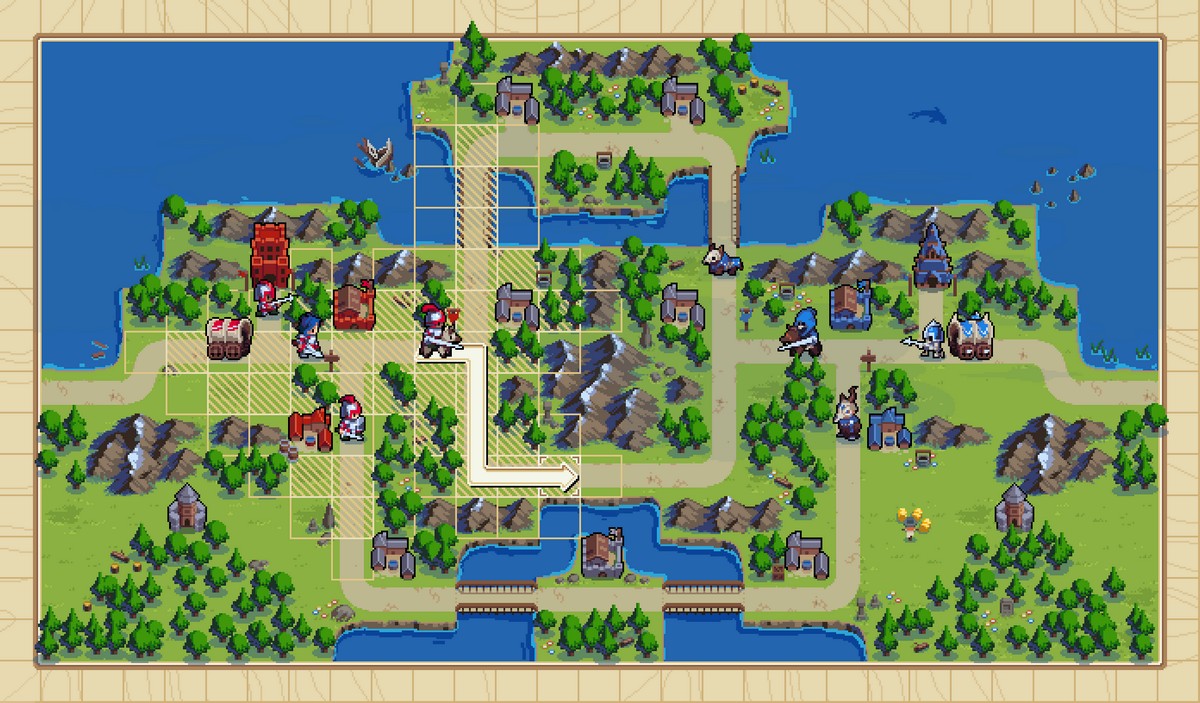
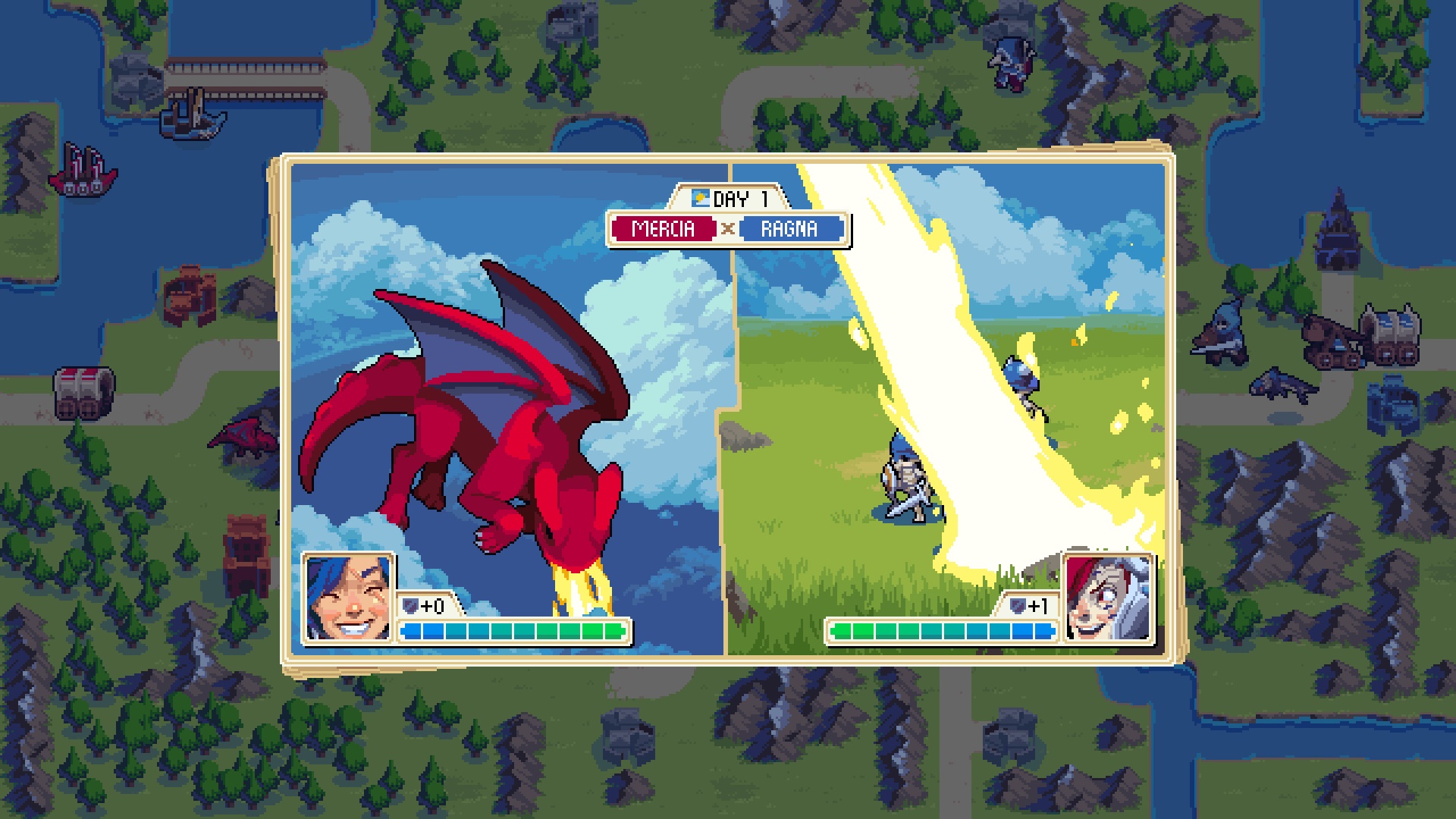

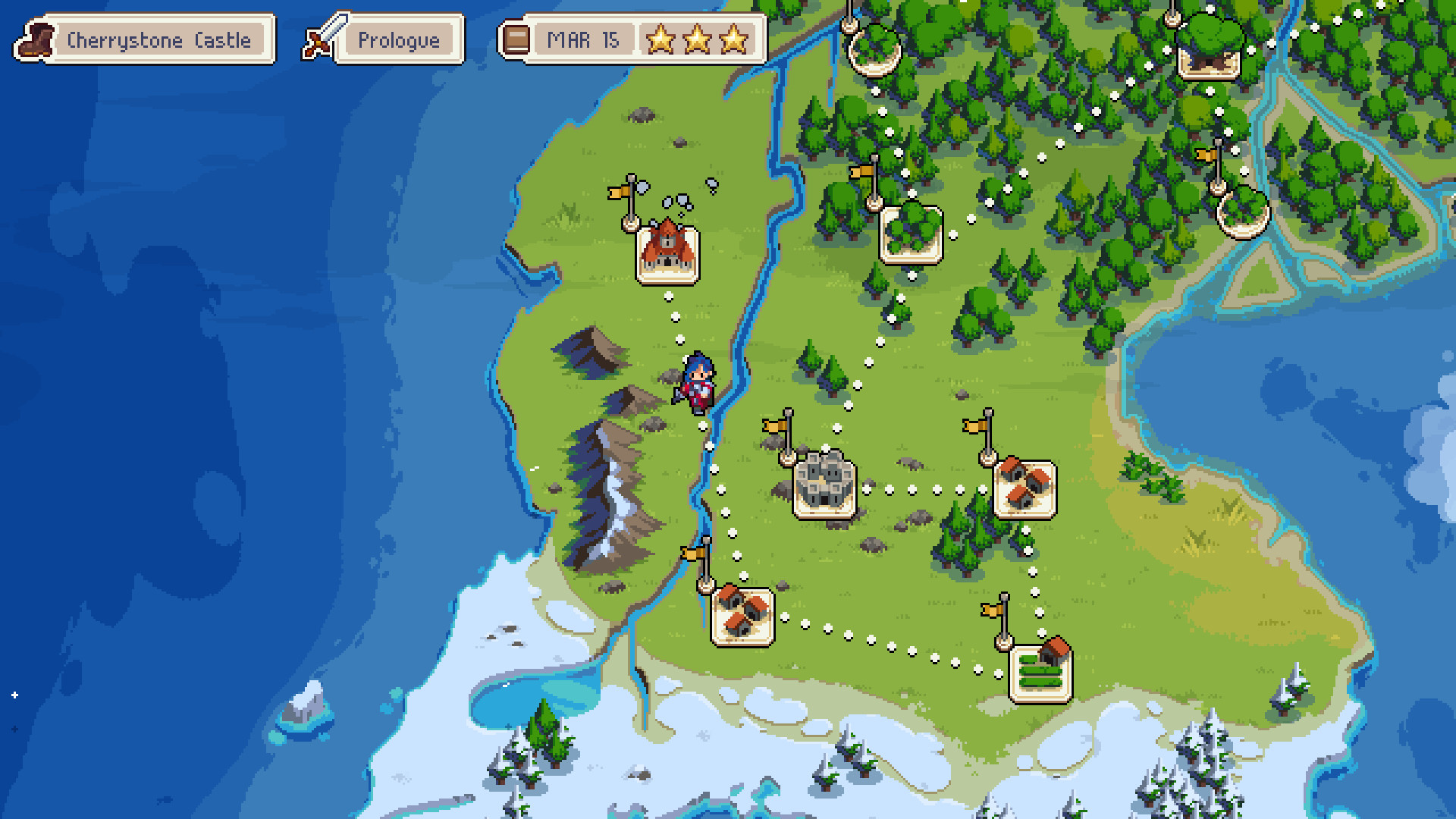



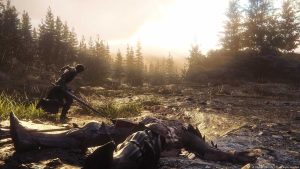

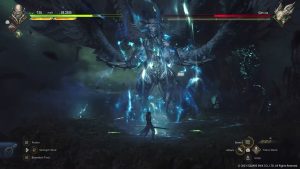



Share Your Thoughts Below (Always follow our comments policy!)